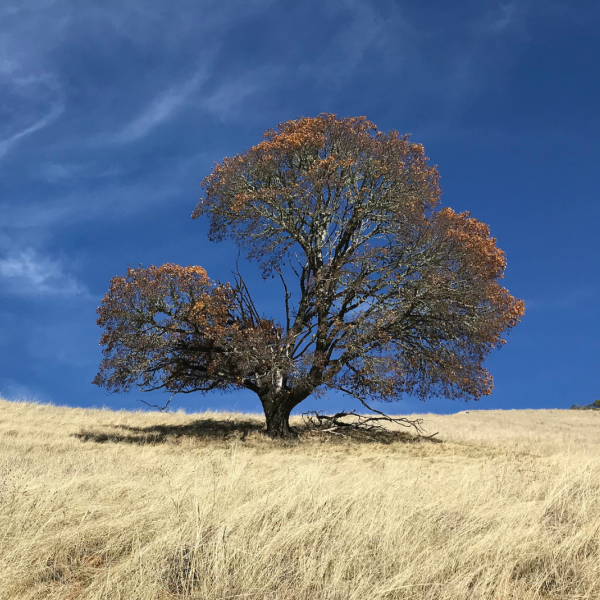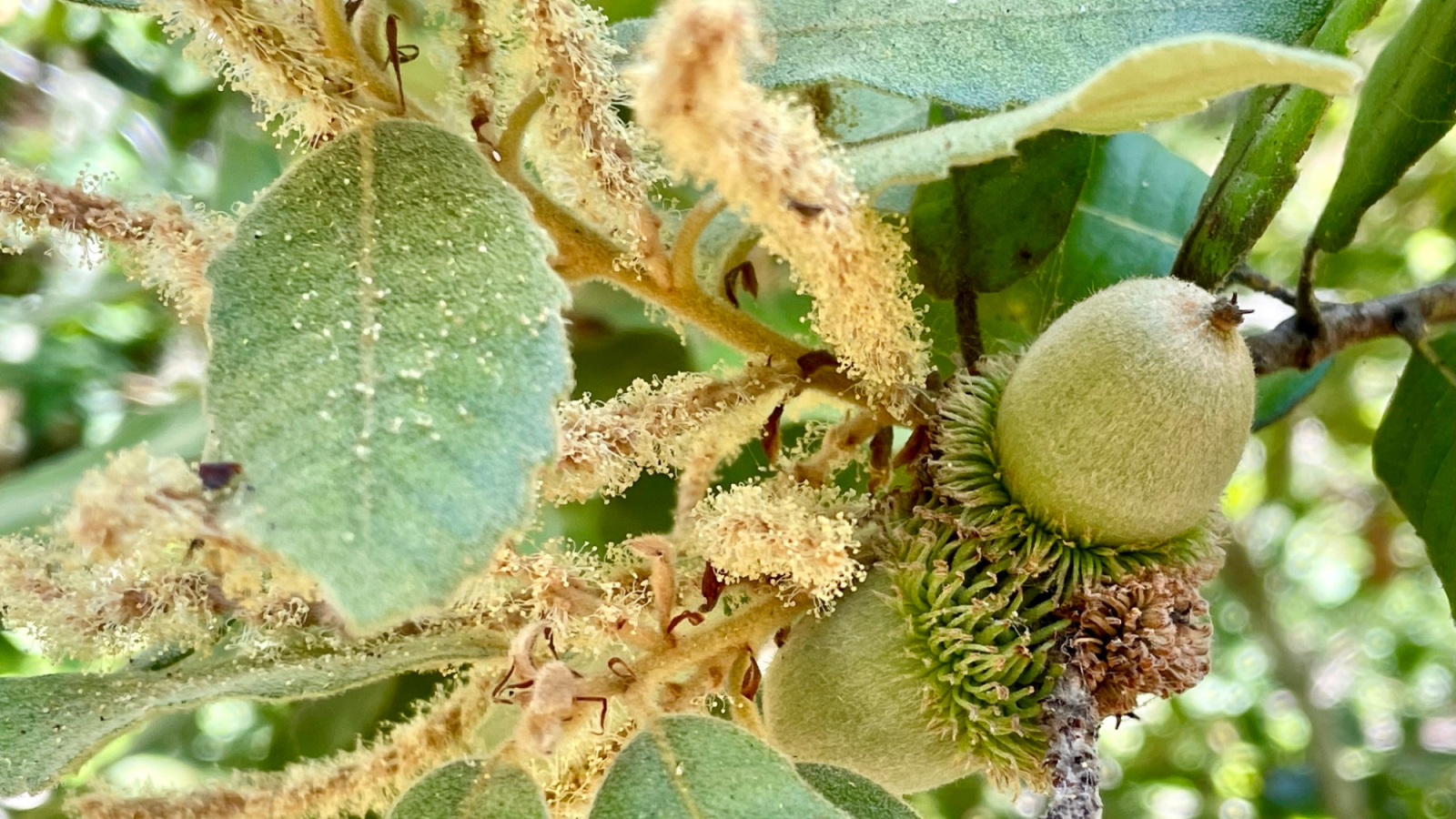Tanoaks have a long and storied relationship with humans in the Santa Cruz Mountains. For millennia, the Native People shelled and ground the tanoak’s large acorns into flour, leaching out the bitter tannins with water before preparing them as food. These tannins are also abundant in tanoak bark, used to tan leather from the mid-1800s well into the 20th century, resulting in great quantities of tanoaks being felled and stripped of their bark.
Today, these slow-growing trees are mostly left undisturbed in our local forests, where they are a valuable source of food and habitat for wildlife. Volunteers for Midpen have conducted studies to observe which animals pollinate tanoaks and have documented visits from bees, butterflies, beetles and more.
Tanoaks are highly susceptible to the human-introduced plant disease, sudden oak death (SOD). Midpen staff are working to protect the tanoaks in the preserves, including collecting and propagating their acorns in search of genetic strains with more resistance to SOD.

Sudden oak death (SOD) is killing California coast live oak, black oak, Shreve's oak, canyon live oak and tanoak trees throughout coastal California and Oregon. Just during the last decade, the pathogen has killed more than one million oak and tanoak trees.

